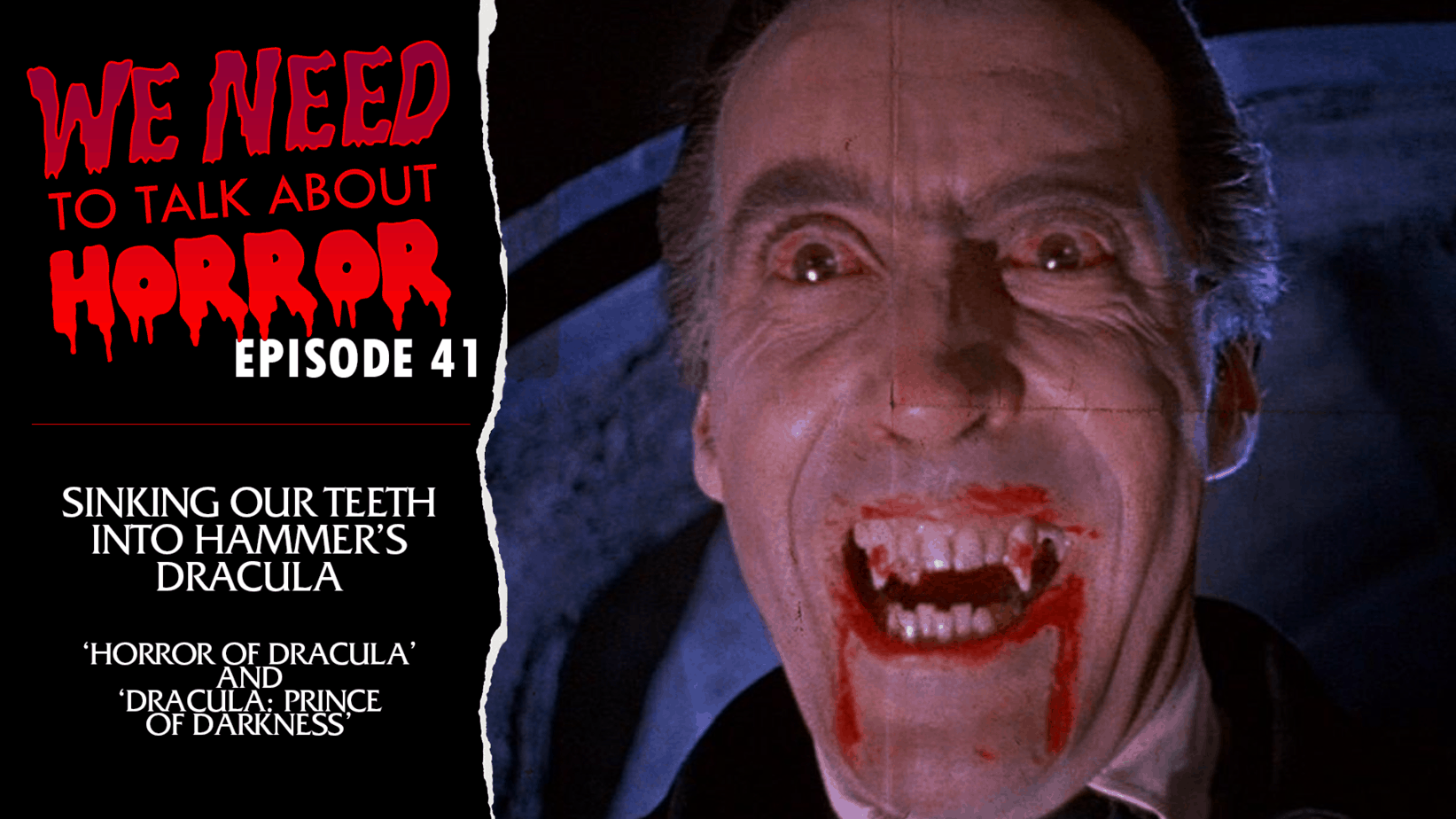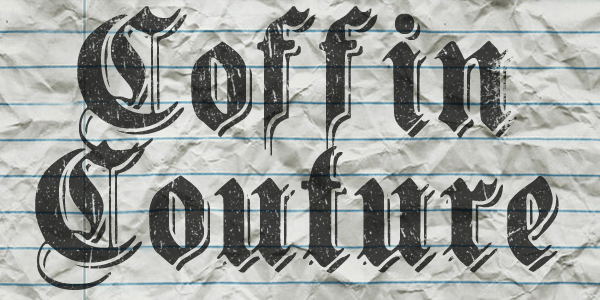Hammer Horror- Britain’s Studio of Blood: THE CURSE OF THE WEREWOLF
 Even though it’s not a full moon, tonight I will still be taking a look at Hammer Film’s only tale of lycanthropy: The Curse of the Werewolf. In the history of film, there have been very few tales that have successfully tackled the idea of the film’s hero (or heroine) transforming into a wolf on the night of a full moon. Besides incorporating a believable wolf-like creature, a good film also has to make the audience connect with or sympathize with the character that suffers from this violent curse. A recent film that achieves this quite well is Ginger Snaps. Working within the confines of a meager budget, the film does an excellent job making the audience struggle along with the female lead as she deals with the pains of growing up and the pains of her new curse. That film owes a lot to The Curse of the Werewolf; a film that previously spotlighted the horrors of growing up. This fourth Hammer film in our month long column, is not only one of the best examples of their Gothic approach to horror but shows their skill at taking the audience on an emotional character driven ride.
Even though it’s not a full moon, tonight I will still be taking a look at Hammer Film’s only tale of lycanthropy: The Curse of the Werewolf. In the history of film, there have been very few tales that have successfully tackled the idea of the film’s hero (or heroine) transforming into a wolf on the night of a full moon. Besides incorporating a believable wolf-like creature, a good film also has to make the audience connect with or sympathize with the character that suffers from this violent curse. A recent film that achieves this quite well is Ginger Snaps. Working within the confines of a meager budget, the film does an excellent job making the audience struggle along with the female lead as she deals with the pains of growing up and the pains of her new curse. That film owes a lot to The Curse of the Werewolf; a film that previously spotlighted the horrors of growing up. This fourth Hammer film in our month long column, is not only one of the best examples of their Gothic approach to horror but shows their skill at taking the audience on an emotional character driven ride.
From Spain to Paris to Spain Again: Capturing Hammer’s Lone Wolf
Hammer’s next film was supposed to be The Rape of Sabena. Intended to be a Spanish Inquisition picture, the film was put to a halt by the “Catholic League of Decency.” At this time, their rejection of the film would mean a decline in the box-office numbers. With numerous sets already built, including a full Spanish village, Hammer was left to come up with a new plan. Thanks to the help of Anthony Rinds, Hammer spat out an adaptation of the Guy Endore novel The Werewolf of Paris. Changing the location from Paris to Spain (to accommodate for the sets), Hammer went into full production with veteran director Terence Fisher. If you are keeping track at home, this is the fourth Hammer film we have looked at directed by Fisher. The film still encountered problems from the “League of Decency” (at least not from Universal as well, like their previous films) due to the werewolf being born on Christmas day (Christ’s “birthday”). The film shows the werewolf boy through his years as a young child all the way to him as a young man. Writing under the pen name John Elder, Rinds thought that displaying this growth allows the audience to connect more with the cursed hero. Bernard Robinson, who did production design for this film as well as previous ones, resumed his duty with great skill and care. Yet what made the film work and tied the hurried production together was a young 22 year old Oliver Reed. Reed, who lied about his age to get the part, plays the tortured Leon. Reed’s performance is the centerpiece to this 1961 film that unfortunately didn’t match the success of Hammer’s previous Frankenstein and Dracula entries. As a result, the werewolf never saw another full moon with Hammer.
The Curse of the Werewolf (1961)
The film opens with a dirty beggar who wanders into a castle the night of a royal wedding. After he is humiliated and mistreated among the guests, the wanderer is thrown down into the dungeon. Everyone forgets about the dirty man except for the mute daughter of one of the guards of the castle. When the girl is older (and more beautiful … let me say), she also gets thrown into the same dungeon after she rejects the advances of the Marques. In a series of startling events, the girl gets raped in the prison by the beggar, escapes the prison, and proceeds to stab the evil Marques to death for his misdeeds. The poor girl, now pregnant, gets picked up by a loving couple who nurse the girl back to health so that she can give birth to the baby. Unfortunately for the new adoptive parents of baby Leon … this is not just an ordinary boy. Thanks to this mysterious beggar, the boy is born with a craving for blood and a fear of the full moon. His appetite is mainly curbed while he lives in the loving home of his adoptive parents. Yet all hell breaks loose when he grows old enough to move out and live on his own … in the wild.
The film begins almost like a morality story. With the beggar, the evil king, and the mute girl, you almost get the feeling that this is a parable or an old folk tale. You don’t get a horror movie vibe right off the bat. Yet the film hits you out of nowhere when the newly escaped girl stabs the Marquis to death. It is quite a brutal sight compared to previous Hammer films. Though the film takes its time in the storytelling and development of the main characters, some viewers may see this as a test of their patience. Once they got to the birth of Leon, I found it interesting to see this cursed boy go from first bearing his furry palms and sharp fangs to the full-blown werewolf which we see by the end of the film. The werewolf creature is a sight to be seen. Roy Ashton did the make-up for our tragic hero and the decrepit looking Marquis. Both are equally terrifying! A word of warning: You don’t get to see the wolf in all his hairy glory until the climactic roof-top chase at the finale. As the audience waits for Leon’s inevitable transformation, we witness Oliver Reed give a stirring performance that truly captures the inner turmoil the man is going through. His slight twitching, shaking, and persistent sweating at the sight of the full moon physically shows you what Leon is emotionally dealing with. Oliver Reed gives a classic performance that should push the film in the must-see category for any horror fan. I want to re-iterate, though the film does have some good thrilling scenes (especially one involving our werewolf and a persistent prostitute), the majority of the film is a bit more character driven. Yet once you you see the werewolf run from the villagers and scaling roof tops in his tattered clothes, you will realize it was all worth the wait.
Next week, I will be looking at two vampire films and visit a certain snake-haired woman.
All month long, you can catch some of these classic Hammer films every Friday night on Turner Classic Movies. You can find their schedule here.





